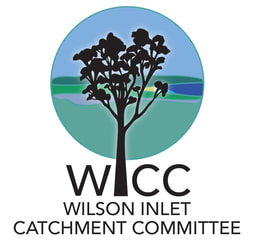Lindesey Link - Conservation Action Plan (CAP)
In October 2011 Gondwana Link and the Wilson Inlet Catchment Committee commenced the process to undertake a Conservation Action Plan (CAP) for the area between Mt Lindesay National Park and the Porongurup National Park with funding provided by South Coast NRM (Caring for Our Country). Conservation Action Planning (CAP) is an integrated process for planning, implementing, and measuring conservation success for conservation projects. The broad aim of the CAP is to develop a plan for improving conservation values across the landscape, by adding value to the NRM efforts currently underway in this important biodiversity 'hotspot' and by providing a framework for leveraging more funds for on-ground works.
An integral part of the CAP process is participation and input from community and other key stakeholders. The project team consists of: Barry Heydenrych (GAWA); Murray Anning and Leanne Tomlinson (Australian Blue Gum Co); Geoff Rolland (Australian Plantation Forestry Company); Wendy Bradshaw; Stephen Frost, Bill Hollingworth, Lynn Heppell and Elissa Stewart (WICC).
The CAP process guides the project team to identify effective conservation strategies. It provides an objective, consistent and transparent accounting of conservation actions and the intended and actual outcomes of conservation projects. It enables project staff to responsively adapt their actions to improve strategy effectiveness and achieve greater conservation impact.
Seven key conservation targets have been identified as the focus for protection and restoration efforts. These include:
An integral part of the CAP process is participation and input from community and other key stakeholders. The project team consists of: Barry Heydenrych (GAWA); Murray Anning and Leanne Tomlinson (Australian Blue Gum Co); Geoff Rolland (Australian Plantation Forestry Company); Wendy Bradshaw; Stephen Frost, Bill Hollingworth, Lynn Heppell and Elissa Stewart (WICC).
The CAP process guides the project team to identify effective conservation strategies. It provides an objective, consistent and transparent accounting of conservation actions and the intended and actual outcomes of conservation projects. It enables project staff to responsively adapt their actions to improve strategy effectiveness and achieve greater conservation impact.
Seven key conservation targets have been identified as the focus for protection and restoration efforts. These include:
- Black gloved Wallaby,
- Jarrah Marri Forests,
- Albany Blackbutt and Banksia Woodlands,
- Granite outcrops and ridges,
- Honey Possums,
- Karri and Wandoo outliers,
- Wetlands, including rivers and creeks.
